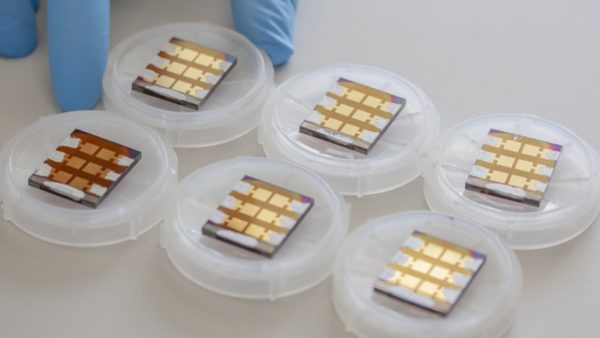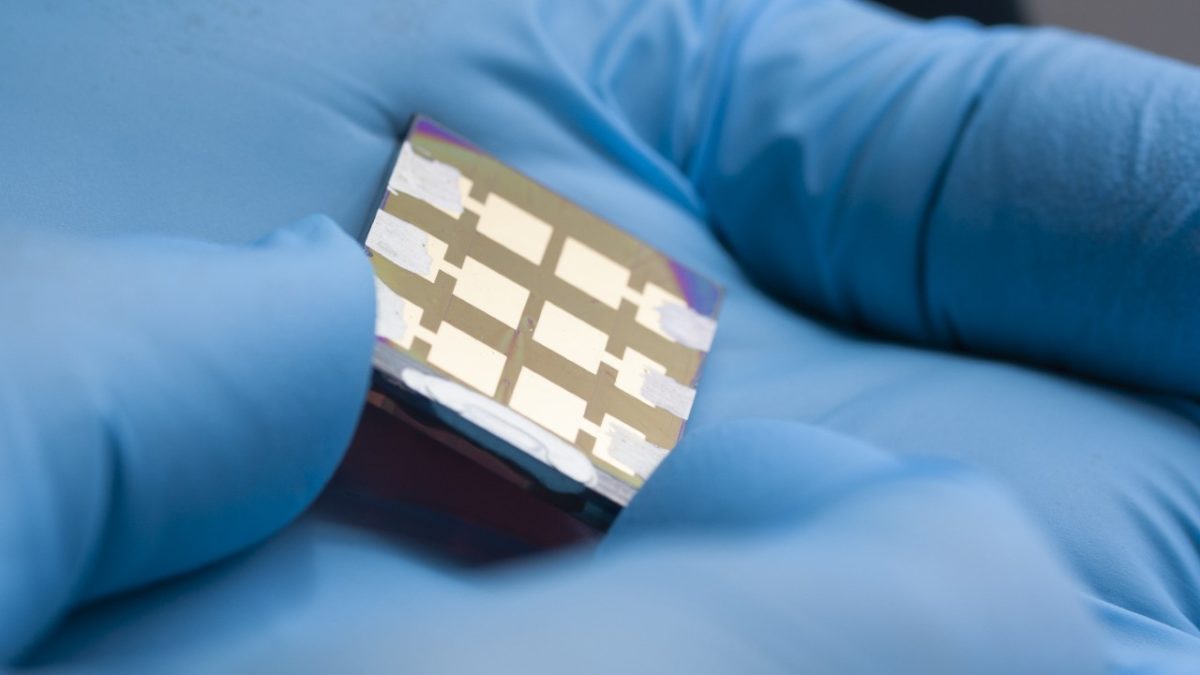Researchers at the École Polytechnique Fédérale de Lausanne (EPFL) have built a lead halide perovskite solar cell incorporating an organic cation based on benzodithiophene (BDT), a polymer that shows notable electron donor properties due to its electron-rich π-conjugation system.
“Given that the bandgap energy of the quasi-layered based cells is tunable, we can imagine these devices for use in a wide variety of applications, such as for indoor use and as top cells in tandem devices,” research co-author Kevin Sivula told pv magazine. “Our devices have production costs very similar to the standard lead halide perovskites solar cells and the cost of the benzodithiophene would be negligible with respect to the full device.”
BDT was combined with layered and quasi-layered lead iodide thin films based on Ruddlesden–Popper (RP) perovskite, which is a kind of perovskite that is known for its excellent stability, and methylammonium (MA). “Benzodithiophene (BDT) is a widely successful planar conjugated building block in the field of organic semiconductors due to its excellent semiconducting properties and its ease of synthesis and functionalization,” the scientists explained, noting that it's the first time BDT is used as an alternative to phenylethylammonium (PEA) in cations for perovskite cells.

Image: École Polytechnique Fédérale de Lausanne (EPFL)
By preparing the BDT-based cations with different alkane linkers, the academics found that their length is crucial for the combination with layered lead halide perovskites (LLHPs). The cations were integrated with a standard cell with an n-i-p layout fabricated with a fluorine-doped tin oxide (FTO) substrate, an electron transport layer (ETL) based on mesoporous titanium oxide (TiO2), a hole transporting layer (HTL) made of Spiro-OMeTAD, and a top electrode based on gold (Au).
The performance of the cell was compared to that of a similar cell having PEA instead of BDT in the cation and the latter exhibited a power conversion efficiency that was 1.0% higher at 14.7%. This improvement was attributed by the scientists to improved short-circuit current and a slight increase of the fill factor. “Interestingly, despite the identical processing conditions, we observed a significantly different morphology of the active layer with scanning electron microscopy (SEM) showing a considerably smaller grain size for the BDT-containing QLLHP active layers compared to PEA,” they emphasized.
Furthermore, the BDT-based device retained 64% of its original efficiency after 130 hours and the PEA-based cell only 31%. “The enhanced stability of the MBDT device is reasonably ascribed to an improved ability of the bulkier pi-conjugated BDT cation to suppress MA leakage from the main perovskite domains in the active layer,” the Swiss group stated.
The solar cell is presented in the paper “Benzodithiophene-Based Spacers for Layered and Quasi-Layered Lead Halide Perovskite Solar Cells,” published in Chemistry Europe.
This content is protected by copyright and may not be reused. If you want to cooperate with us and would like to reuse some of our content, please contact: editors@pv-magazine.com.




5 comments
By submitting this form you agree to pv magazine using your data for the purposes of publishing your comment.
Your personal data will only be disclosed or otherwise transmitted to third parties for the purposes of spam filtering or if this is necessary for technical maintenance of the website. Any other transfer to third parties will not take place unless this is justified on the basis of applicable data protection regulations or if pv magazine is legally obliged to do so.
You may revoke this consent at any time with effect for the future, in which case your personal data will be deleted immediately. Otherwise, your data will be deleted if pv magazine has processed your request or the purpose of data storage is fulfilled.
Further information on data privacy can be found in our Data Protection Policy.